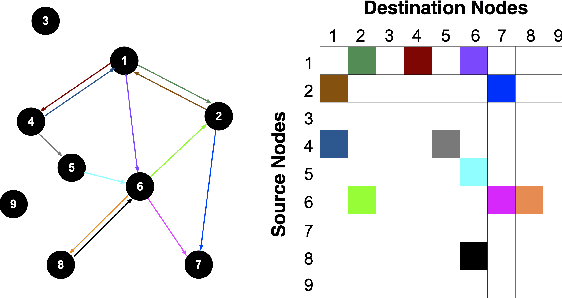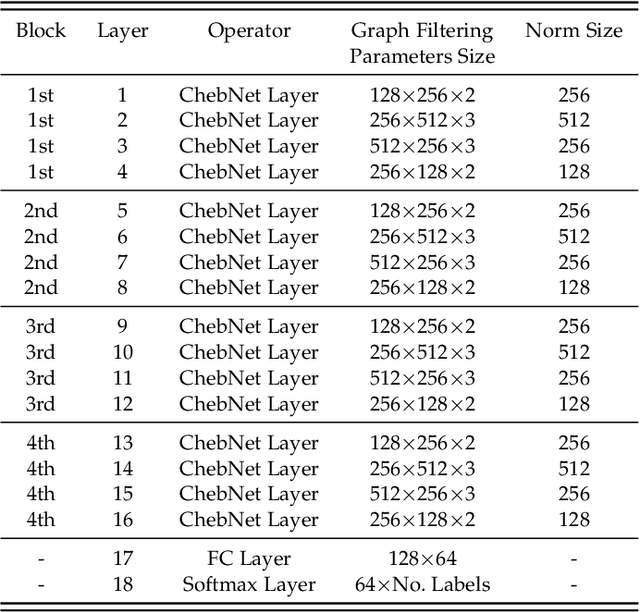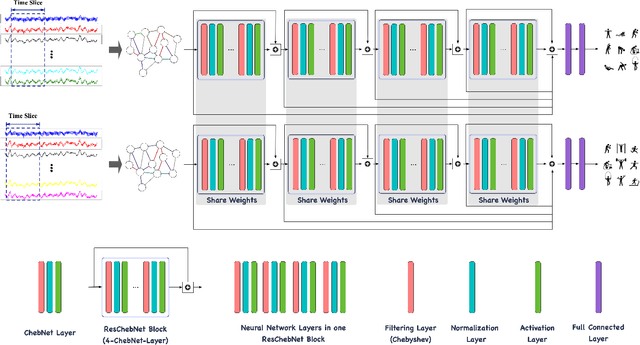Wei Lv
Joint Projection Learning and Tensor Decomposition Based Incomplete Multi-view Clustering
Oct 06, 2023Abstract:Incomplete multi-view clustering (IMVC) has received increasing attention since it is often that some views of samples are incomplete in reality. Most existing methods learn similarity subgraphs from original incomplete multi-view data and seek complete graphs by exploring the incomplete subgraphs of each view for spectral clustering. However, the graphs constructed on the original high-dimensional data may be suboptimal due to feature redundancy and noise. Besides, previous methods generally ignored the graph noise caused by the inter-class and intra-class structure variation during the transformation of incomplete graphs and complete graphs. To address these problems, we propose a novel Joint Projection Learning and Tensor Decomposition Based method (JPLTD) for IMVC. Specifically, to alleviate the influence of redundant features and noise in high-dimensional data, JPLTD introduces an orthogonal projection matrix to project the high-dimensional features into a lower-dimensional space for compact feature learning.Meanwhile, based on the lower-dimensional space, the similarity graphs corresponding to instances of different views are learned, and JPLTD stacks these graphs into a third-order low-rank tensor to explore the high-order correlations across different views. We further consider the graph noise of projected data caused by missing samples and use a tensor-decomposition based graph filter for robust clustering.JPLTD decomposes the original tensor into an intrinsic tensor and a sparse tensor. The intrinsic tensor models the true data similarities. An effective optimization algorithm is adopted to solve the JPLTD model. Comprehensive experiments on several benchmark datasets demonstrate that JPLTD outperforms the state-of-the-art methods. The code of JPLTD is available at https://github.com/weilvNJU/JPLTD.
Deep Transfer Learning with Graph Neural Network for Sensor-Based Human Activity Recognition
Mar 14, 2022



Abstract:The sensor-based human activity recognition (HAR) in mobile application scenarios is often confronted with sensor modalities variation and annotated data deficiency. Given this observation, we devised a graph-inspired deep learning approach toward the sensor-based HAR tasks, which was further used to build a deep transfer learning model toward giving a tentative solution for these two challenging problems. Specifically, we present a multi-layer residual structure involved graph convolutional neural network (ResGCNN) toward the sensor-based HAR tasks, namely the HAR-ResGCNN approach. Experimental results on the PAMAP2 and mHealth data sets demonstrate that our ResGCNN is effective at capturing the characteristics of actions with comparable results compared to other sensor-based HAR models (with an average accuracy of 98.18% and 99.07%, respectively). More importantly, the deep transfer learning experiments using the ResGCNN model show excellent transferability and few-shot learning performance. The graph-based framework shows good meta-learning ability and is supposed to be a promising solution in sensor-based HAR tasks.
 Add to Chrome
Add to Chrome Add to Firefox
Add to Firefox Add to Edge
Add to Edge